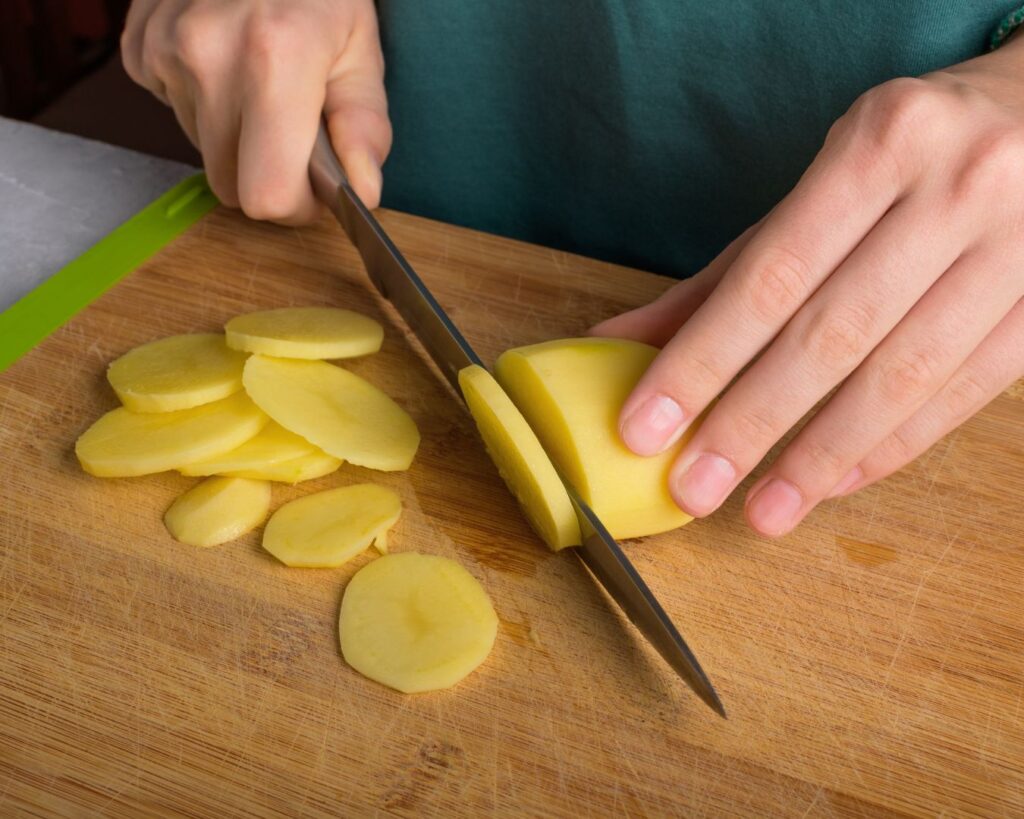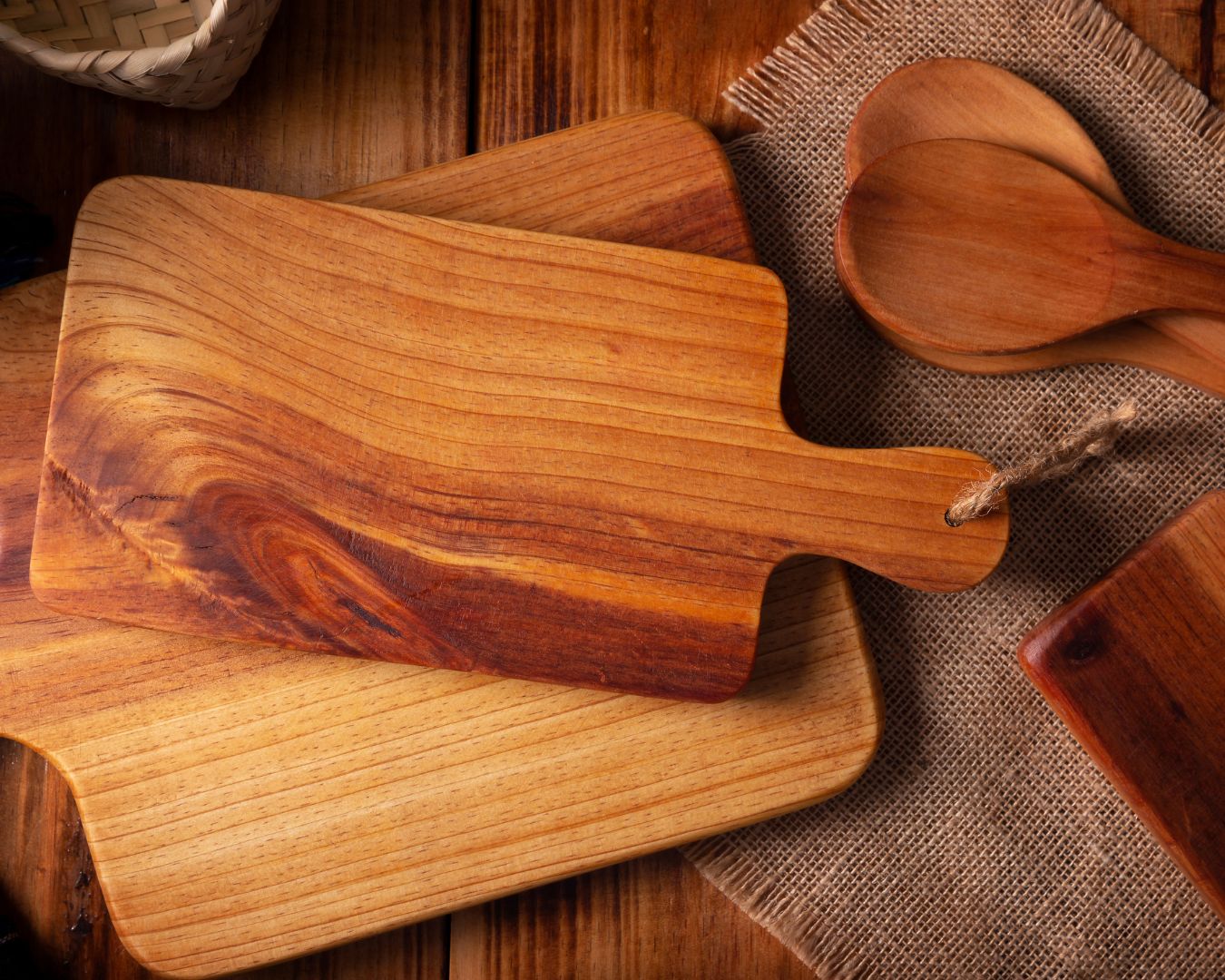How to Care for and Maintain Wooden Cutting Boards
Wooden cutting boards are a kitchen essential, beloved for their durability, natural beauty, and ability to protect knives. However, to keep your wooden cutting board in top condition, proper care and maintenance are essential. With the right techniques, you can extend the life of your cutting board and ensure it remains a safe and functional tool in your kitchen. Here’s a comprehensive guide on how to care for and maintain your wooden cutting boards.
Clean Immediately After Use
After each use, it’s important to clean your wooden cutting board promptly. This prevents food particles and juices from soaking into the wood, which can lead to stains, odors, and bacterial growth. To clean your board:
- Hand wash only: Never put your wooden cutting board in the dishwasher. The intense heat and prolonged exposure to water can cause the wood to warp and crack.
- Use mild soap: Wash the board with warm water and a small amount of mild dish soap. Avoid using harsh chemicals or bleach, which can damage the wood.
- Scrub gently: Use a soft sponge or brush to scrub the surface of the board. Pay extra attention to any grooves or cuts where food particles might be trapped.
- Rinse thoroughly: Make sure to rinse off all the soap to avoid any residue being left on the board.
Dry Immediately
After washing, it’s crucial to dry your wooden cutting board immediately to prevent water from seeping into the wood. Waterlogged wood can lead to warping, cracking, and even mold growth. Follow these steps:
- Pat dry: Use a clean, dry cloth or paper towel to pat the board dry.
- Air dry upright: Stand the board on its side to allow air to circulate around it, ensuring that both sides dry evenly.
Disinfect Naturally
Wooden cutting boards are naturally antibacterial, but it’s still a good idea to disinfect them regularly, especially after cutting raw meat, poultry, or fish. You can disinfect your board naturally using the following methods:
- Vinegar solution: Wipe down the board with a mixture of equal parts white vinegar and water. This helps to kill bacteria and neutralize odors.
- Lemon and salt: Sprinkle coarse salt over the board, then rub it with half a lemon, cut side down. The salt acts as an abrasive to remove stains, while the lemon juice disinfects and leaves a fresh scent.

Condition Regularly
Wooden cutting boards need to be conditioned regularly to prevent the wood from drying out and cracking. Conditioning helps to maintain the board’s luster and provides a protective barrier against moisture. Here’s how to do it:
- Choose the right oil: Use food-grade mineral oil or a specialized cutting board oil. Avoid using cooking oils like olive or vegetable oil, as they can go rancid over time.
- Apply the oil: Pour a small amount of oil onto the surface of the board and use a clean cloth to rub it in. Be sure to cover all surfaces, including the edges.
- Let it soak in: Allow the oil to soak into the wood for several hours or overnight. This will help the wood absorb the oil deeply, providing long-lasting protection.
- Wipe off excess: After the oil has soaked in, wipe off any excess with a clean cloth. Repeat this process once a month or more often if your board is used frequently.
Remove Stains and Odors
Over time, wooden cutting boards can develop stains and odors from foods like garlic, onions, and beets. To remove these:
- Baking soda paste: Make a paste with baking soda and water, apply it to the stained area, and scrub gently with a soft brush. Rinse thoroughly and dry.
- Vinegar rinse: For persistent odors, wipe the board with white vinegar, then rinse and dry.
Avoid Excessive Moisture
Moisture is the enemy of wooden cutting boards. To keep your board in good condition, follow these tips:
- Avoid soaking: Never soak your cutting board in water. Prolonged exposure to water can cause the wood to swell, warp, and crack.
- Control humidity: Store your board in a dry place, away from sinks, dishwashers, and humid environments.

Resurface When Necessary
Over time, your wooden cutting board may develop deep cuts, scratches, or grooves that can harbor bacteria. If this happens, it’s time to resurface the board:
- Sand the surface: Use fine-grit sandpaper to gently sand down the surface of the board, removing any rough spots or deep cuts. Sand in the direction of the wood grain for the best results.
- Recondition the board: After sanding, clean the board thoroughly and apply a generous amount of oil to recondition the wood.
Store Properly
Proper storage is key to maintaining the longevity of your wooden cutting board:
- Store vertically: Store your cutting board upright, rather than flat, to allow air to circulate around it. This prevents moisture buildup and helps the board dry completely.
- Avoid stacking: Don’t stack heavy items on top of your cutting board, as this can cause warping or damage over time.
A well-cared-for wooden cutting board can last for years, providing a reliable and attractive surface for all your culinary creations. By following these care and maintenance tips, you can keep your cutting board in excellent condition, ensuring it remains a safe, durable, and beautiful part of your kitchen.

